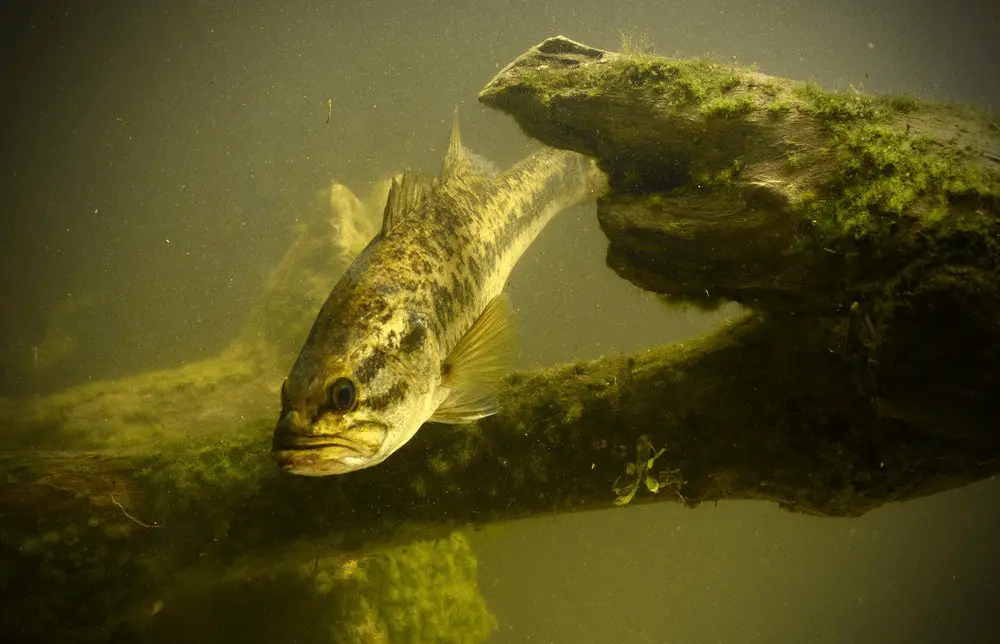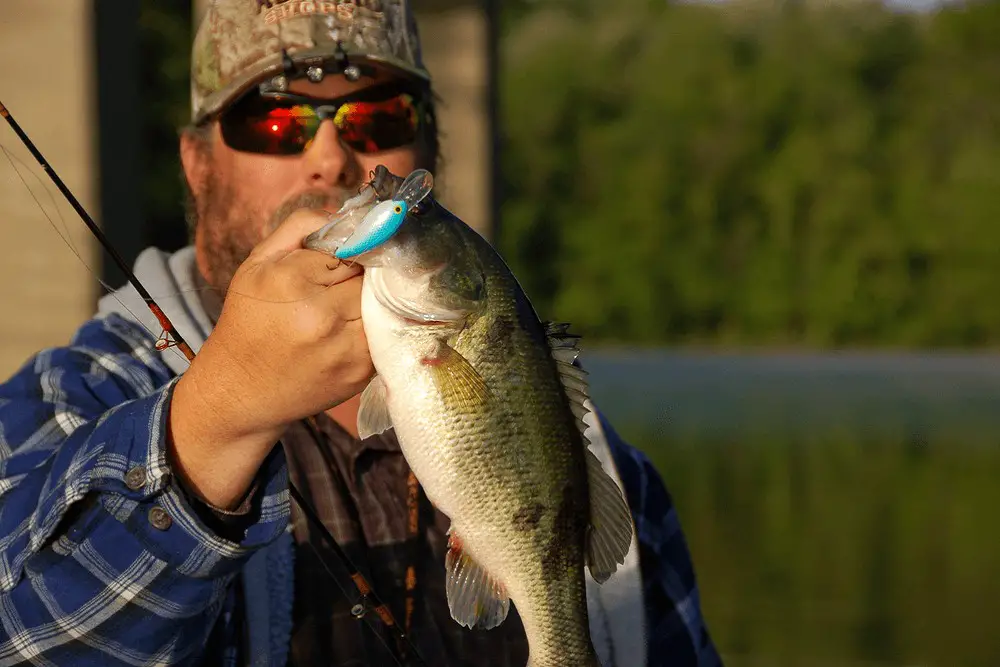
As waters cool down, and the wind temperatures get lower, the opportunities to catch fishes rises.
That is why autumn is the perfect season for all fishing enthusiasts to go out and hit the lakes. Pretty much anything from, sunfish, catfish, walleyes, and more will be available to you.
But, if you’re looking for a serious sport, then you’ll be hunting for that good old classic, the bass. These babies have been fished for sports for generations and many fishermen who call themselves experts are known for singling them out as trophy catch.
But, is bass fishing any different than regular fishing?
Is there something you can do to become an expert bass fisher?
And are there any tips you can give beginners that are still learning the art of fishing?
The answer is… yes.
However, I do want to preface this article by stating, that the tips found on this list can apply nearly all year round, but we’re going to emphasize the advantages of fishing during the fall as it is definitely one of (if not) the best season to fish for bass.
1. Use Bait Wisely
Bass love the fall, it’s commonly said among anglers that they’re preparing for the winter by gorging on food, but scientists beg to differ.
Biologists theorize that fish react positively to colder waters and also take advantage of the increase of smaller fish they can feed on. Bass will prey on schools of smaller fishes such as minnows, shads, bluegills and sunfish, and wherever they flock will be a veritable cornucopia for any opportunistic fisherman out there.
Yet, it’s not going to be as simple as casting a lure in the shape of a small fish to get the attention of the bass, see you have to find one that matches their current prey. For example, shads are common bass prey during fall and a silver-colored lipless crankbait will probably be your best bet.
2. Cover and Location
If there is one thing bass love more than food it is the safety provided by cover. Bass won’t normally be out in the open as they’re fish of prey and their ambush tactics yield better hunting results for them. You have to take advantage of those tactics yourself and understand that casting a lure near them will make fishing a lot easier. If you want to find them, look around places such as:
- Docks
- rocks
- shallow grass
- lily pads
- fallen logs
- wood
- your boat
- etc
Knowing how to use these locations is the key to victory in bass fishing, but there are times when even the bass feel free to be out in the open, and when that happens you’ll need to switch tactics a little bit. If you spot bass jumping out of the water or breaching the surface, you’ll want to grab some jerkbait and go to town (metaphorically not literally). Pro tip, you’ll find better results in shallow stained water. Also, keep in mind there is a cadence for using a jerkbait that most pro fishermen will recommend you and it is the twitch-twitch-pause pattern.
3. Adapt and Overcome
Adaptability can be one of the biggest assets for any fisherman out there. From understanding how weather can affect the behavior of fish to changing locations, or depth, and even using different types of baits, the adaptability of a fisherman can be the deciding factor on whether he catches a whopper or a cold.

Weather Conditions
As many of you know, fall season has a plethora of weather conditions, from rain or snow, to cloudy and sunny days, and these will affect your fishing differently. For example, cloudy weather conditions mean that bass will behave boldly by becoming active hunters. Sunny days on the other hand, tend to make them behave as cautious predators that will hide and attack at a moment’s notice. Knowing these behaviors before going out can help you prepare properly before setting out and discovering that you brought the wrong lures. But, how do you take advantage of the weather now that you do have the knowledge?
Well, on sunny days when the bass are more likely hiding, try bringing sinking lures that bounce such as a jig with a soft plastic trailer (football heads work well). Once the lure reaches the bottom try moving it a bit, let it drop, rinse and repeat.
On the other hand, if it’s cloudy and the fish are boldly going where they normally don’t go. Try using moving baits such as: topwater plugs, swimbaits, and spinnerbaits. These types of baits tend to imitate fleeing baitfish and will draw the attention of the active hunting bass (the hunter becomes the hunted as they say).
Swapping Places
Changing locations can have multiple meanings though, one of them is actively moving to a different place in the lake, the other is fishing in unfamiliar territory outside of your home turf.
When it comes to fishing outside of your usual spots, you’ll force yourself to learn new tactics and techniques. Well-rounded fishermen tend to understand more than one location and it’s with that knowledge that they win tournaments. Once you’ve mastered fishing with jigs and spinners in muddy waters, try going to a crystal clear lake and learn the fine tactics of the dropshot. Stepping outside of the comfort zone will help you become a better fisherman in the long run.
When it comes to the fall season, please remember the following information:
- Bigger fish tend to hang out in the deeper waters
- Rivers are actually fairly good hotspots for bass
- Schools of baitfish will determine where the bass will flock.
- Shads move towards creeks during this season and bass will follow them
- Try to figure out the migration routes of the shad
- Look for bays or coves
- Bass will feed on almost anything, including crawfish
If you keep these things in mind you’ll be able to plan out a route and find out your perfect fishing spot. However, before you set out and begin moving around the lake all willy-nilly keep in mind that some days will simply be slow regardless of what you do. If you feel confident that you have a good spot, change your technique to your most familiar one and look for covers where the bass might be hiding. You might strike it big.
Deep Diving and Depth
You must also keep the depth of the water in mind. Fishes can be anywhere from 40ft down all the way to the surface, but for the most part they’ll hang around the range of 15-25 foot depths. If the fish aren’t biting, simply adjust your weights and keep trying. You might discover that you were off by a small distance in depth.
Lures and Techniques
Finally, discovering the different types of lures and techniques is extremely important for some positive results. Learning the movement patterns for jigs, mastering the perfect dropshot, the steady retreat of a swimbait, the cadence for jerkbait, the slow rolls of spinnerbaits, etc. are key tactics in mastering bass fishing especially during the fall season.
4. Getting Assistance from the Wind
You might think that wind can be detrimental to your fishing attempts, but learning how to fish on a windy fall day can actually be great. Strong winds can encourage bass to hunt as the surface water movements will make it less likely that your boat will scare off the fish. Basically, if the wind picks up and you’re feeling bold, try casting a lure and see what bites!
5. Water Temperatures Dictate Your Lures
Seasonal changes in temperature will also have an impact on fishing. As water temperature can vary during the fall it’s best to know what type of lure to use in specific conditions. Warmer waters yield better results when you use aggressive lures. On the opposite side, colder waters benefit from using slow moving bait. Paying attention to the temperature in the water can often mean the difference between a small number of bass in the bag or a bounty.
6. Research is Key
These days technology can be a real blessing for fishermen. Most experienced anglers have taken to using Global Positioning Systems (GPS) to map out their locations and get a better grasp of their fishing spots. Developing plans before setting out can help you fish some big catches and by identifying the key locations where you suspect bass might be hanging out, you too can become an expert bass fisherman.
Final Words
Catching bass requires keen knowledge of what they prey on, their hunting tactics, and their behaviors in the different climates available during the fall season. Knowing what fish they like to eat, using lures to your advantage, and finding out their hiding spots can make a big difference. At times you’ll need to adapt to the weather conditions, switch your location, or even the depth of your hook, and having experience in the different types of lures will assist in making your day a bountiful one. Other times, you just have to throw caution into the wind and cast a lure in a windy day to see what bites. But, overall just be patient. Fishing is a patient man’s sport and being persistent will yield results eventually (as long as you’re using common sense and the right lures). Follow these tips and you too will become an expert fall bass fisherman.
P.S.
Don’t try fishing during hurricanes and tornadoes even if they are especially windy days.

Wow Is a nice post. I have read some more article from this website its a good website. I am very impress with this article because the writer give very use full tips.
Great tips for Fall Bass — especially getting into the deeper water when the water column starts to cool down.
Thank you!!
patrick